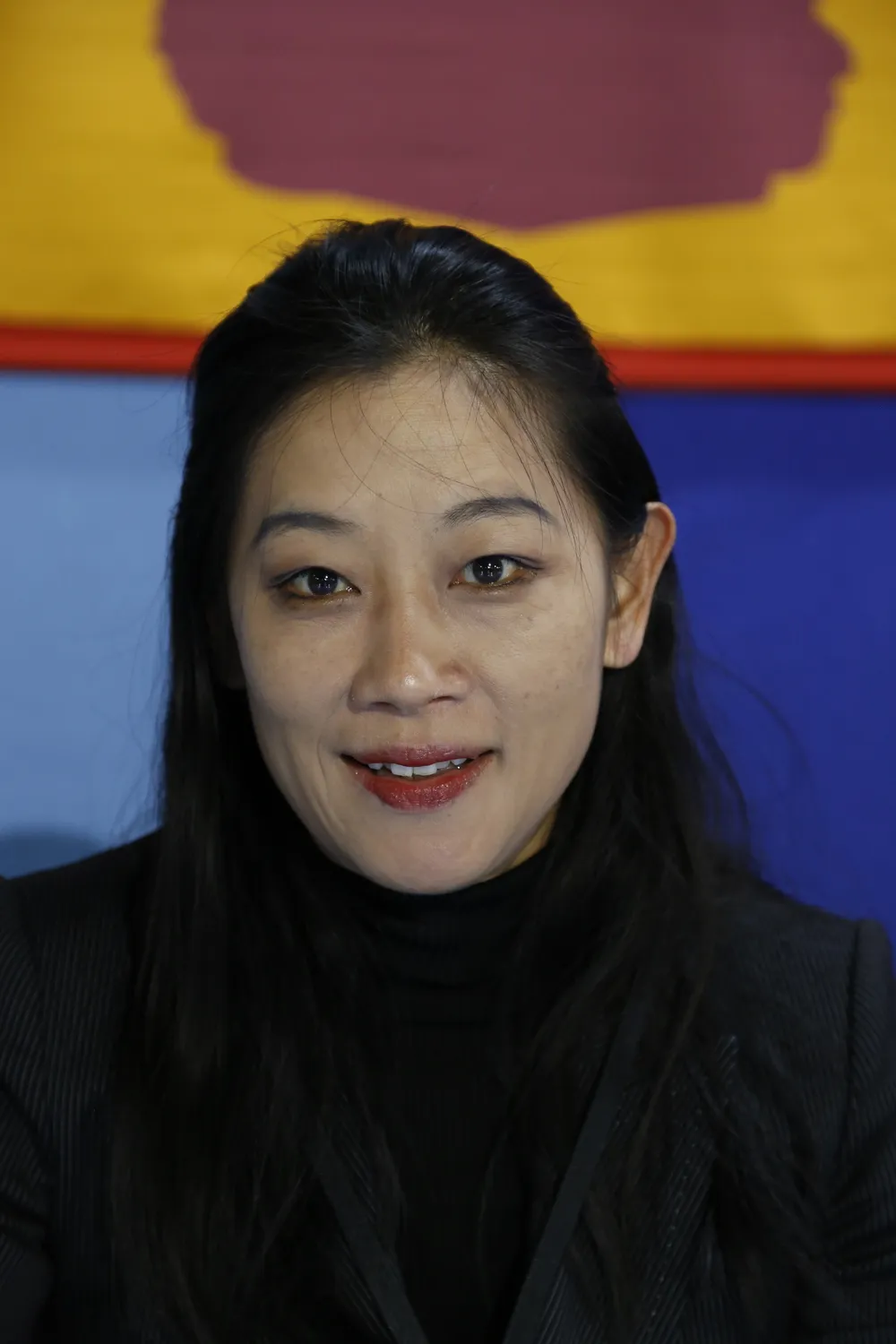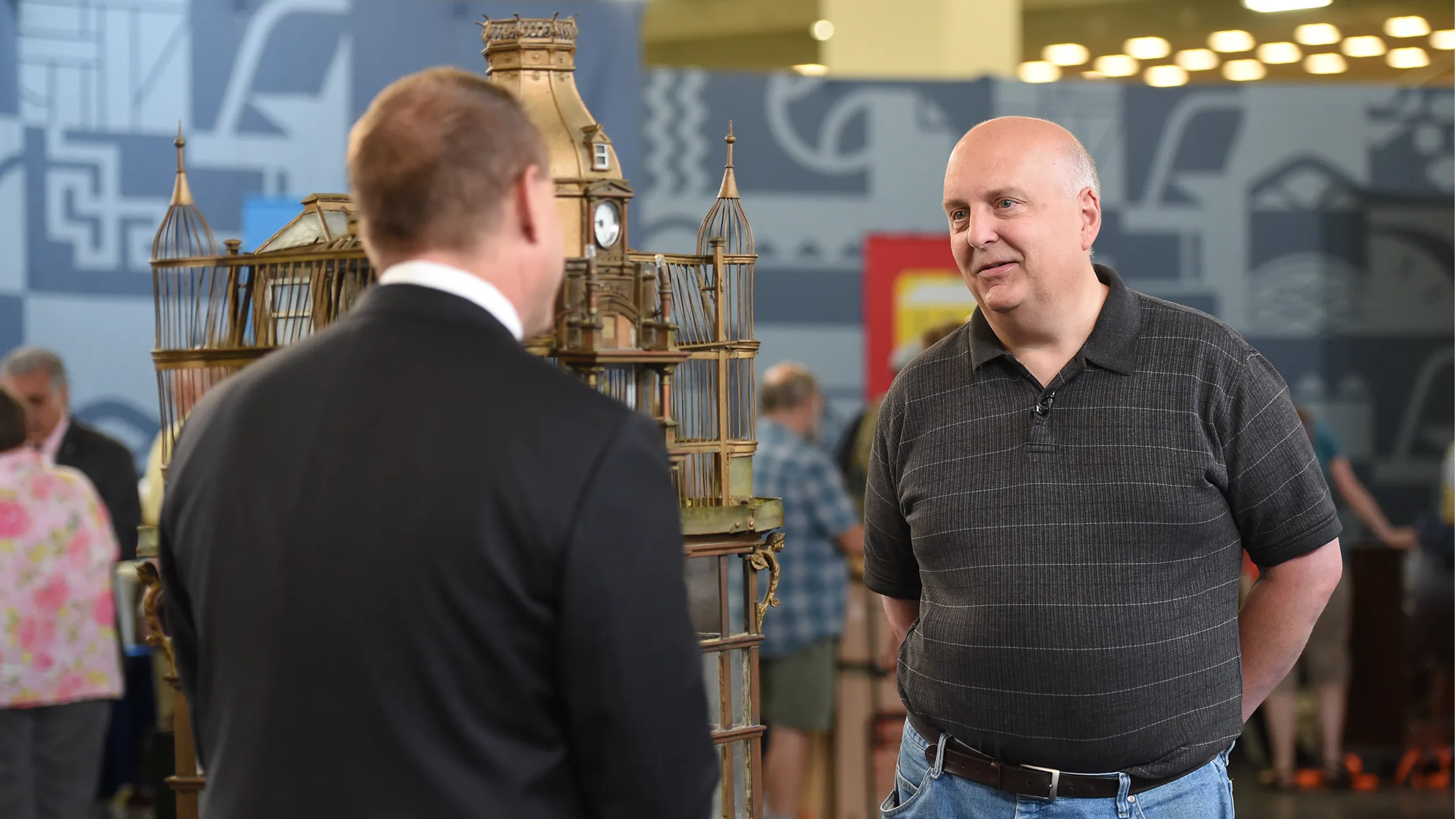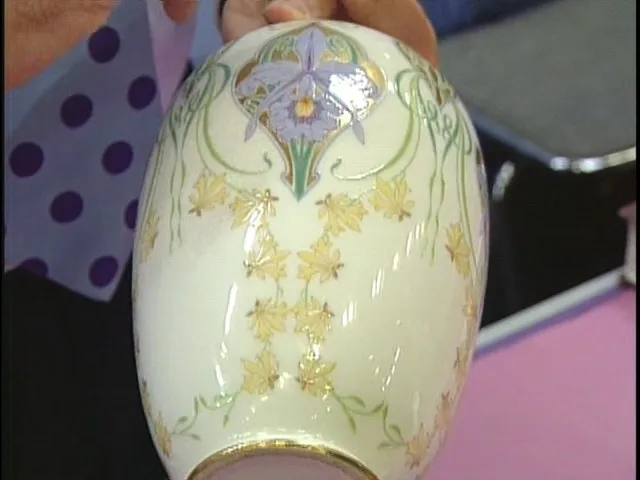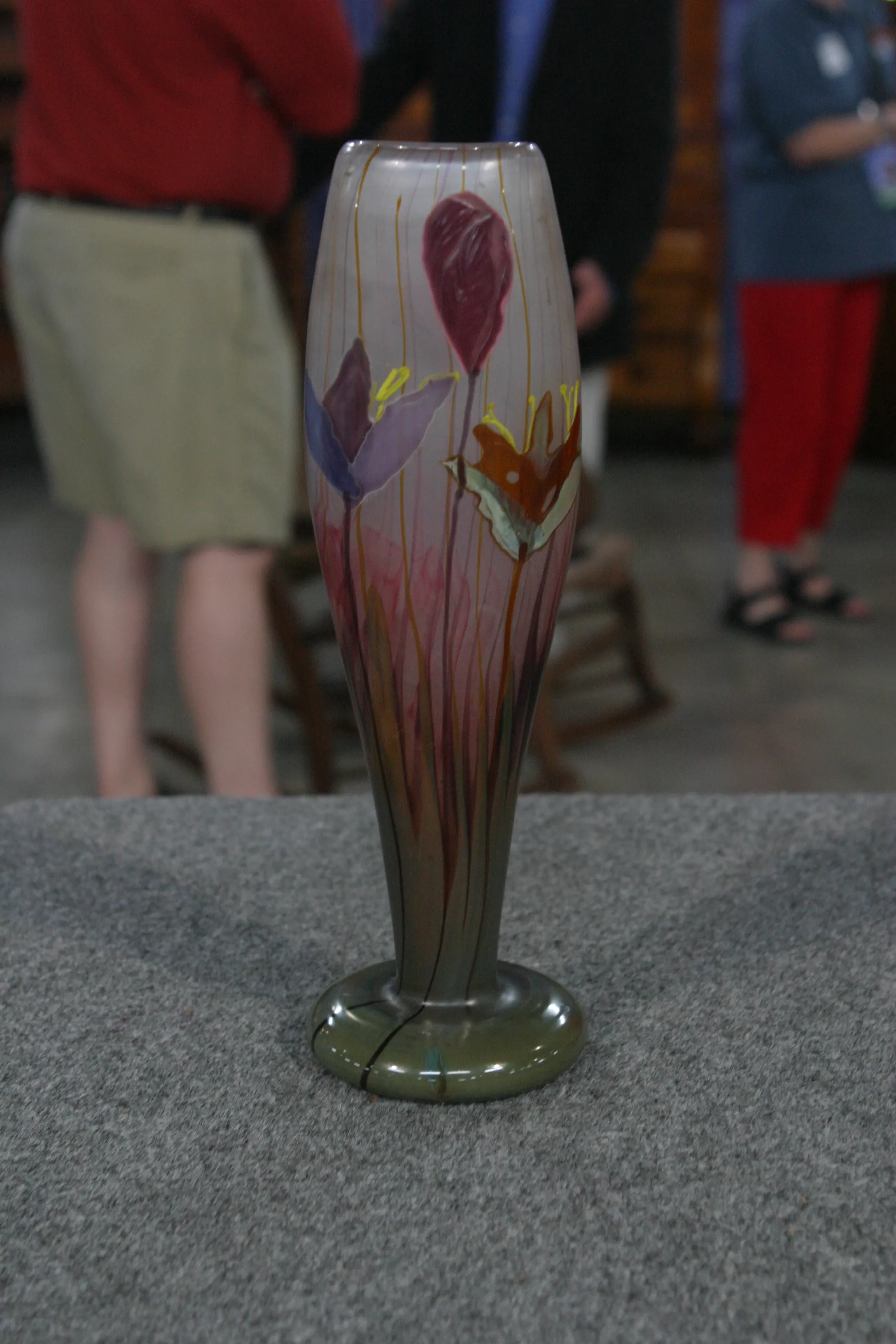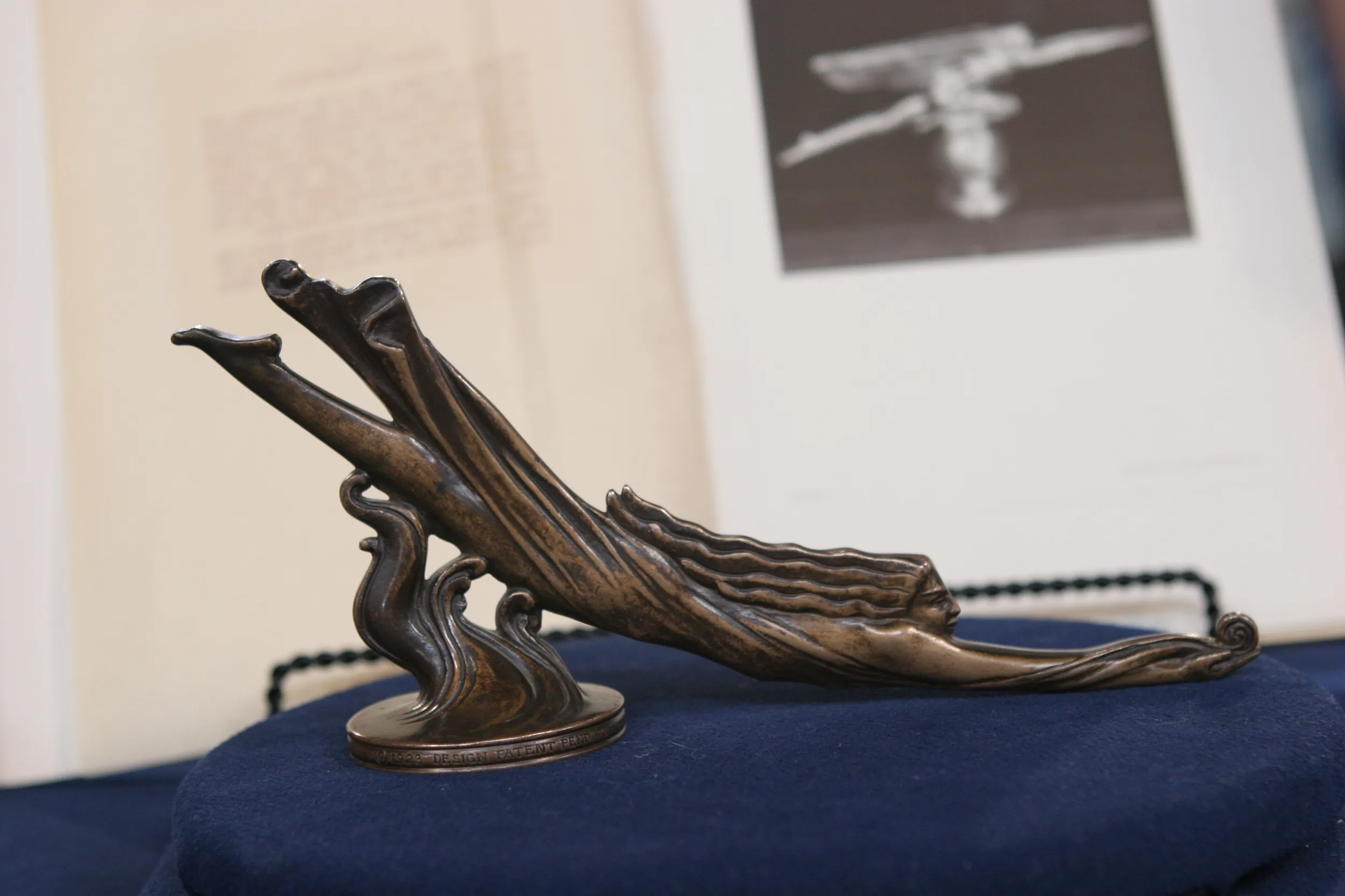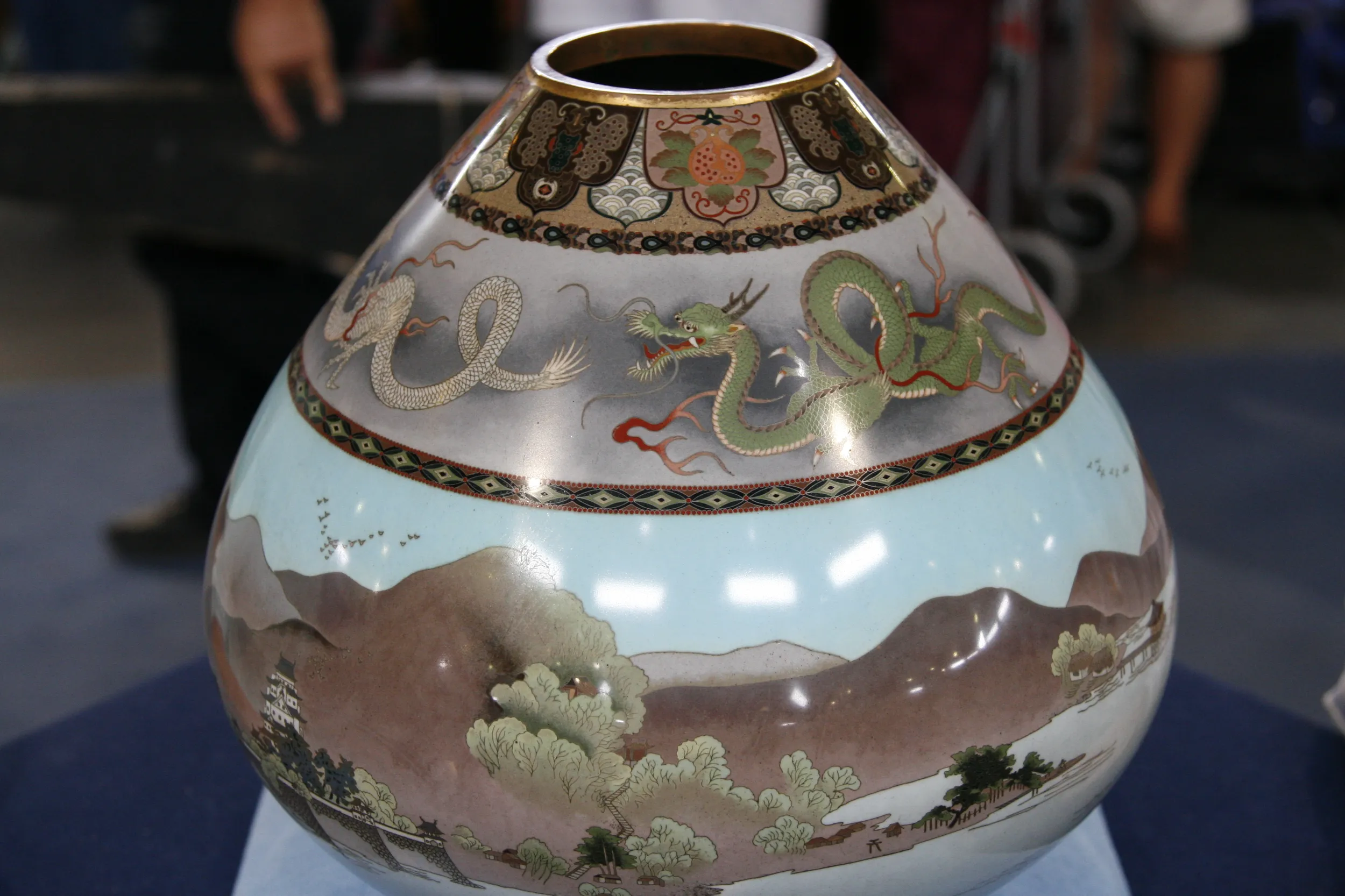APPRAISER: Thank you very much for bringing this large, wonderful vase. When did you get it?
GUEST: It was in the early '70s, a gift from my husband.
APPRAISER: This is Japanese.
GUEST: Oh, Japanese.
APPRAISER: Japanese Meiji period vase, which is more into late Meiji period, early 20th century, porcelain vase. This shape I've seen very often. This size, not too often, very tall. It has a design of shochikubai, which is… sho is this one, pine, with the snow on, and chiku is bamboo. Do you see the bamboo here? Very nicely... colored.
GUEST: Oh, I see.
APPRAISER: Bamboo, pine, and plum. So that's auspicious symbols in Japan. And this has a very nice decoration, which tells you it was made in Arita area, which is in Kyushu, southern part of Japan. There's a signature on the bottom. I think we've seen it here. It says "Ao," which means blue in Japanese.
GUEST: Blue?
APPRAISER: Yes.
GUEST: Oh.
APPRAISER: I'm not sure if it's the name of the maker, but it's probably the name of the studio. This is the top part, this is the bottom part, "Ao." I have seen this artist, but never knew the artist's name. But I have seen this mark.
GUEST: You have.
APPRAISER: Quite a while, yes. Ooh, it's heavy. So the important question: how much is it?
GUEST: Right.
APPRAISER: In auction, it would be about $3,000 to $5,000. So this is what you expected?
GUEST: Ah, no. It was appraised several years ago, actually in the '70s, and it was appraised at that time between $30,000 and $40,000.
APPRAISER: Oh right, yes. Maybe because in '70s and '80s, Japanese art was booming, but now it came down, and it's been down.
GUEST: $3,000 to $4,000, I wouldn't sell it for that.
APPRAISER: $3,000 to $5,000, yes. In auction, maybe it might go up, but that's the price. I think you should insure it for $6,000, $8,000.
GUEST: $6,000 to $8,000?
APPRAISER: $6,000 to $8,000 or so.
GUEST: Okay. Thank you very much.
APPRAISER: You're welcome.
